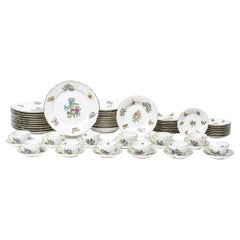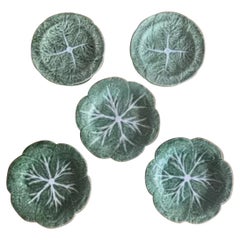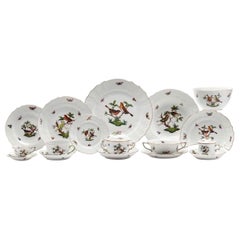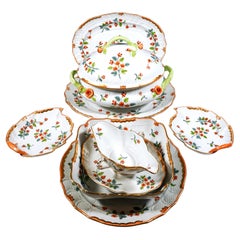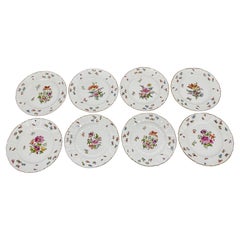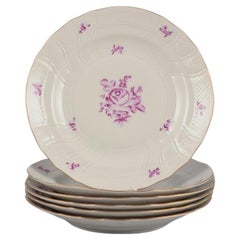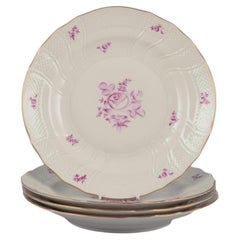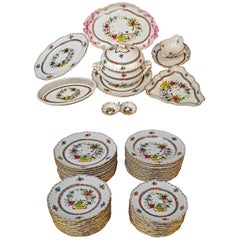Herend Dinner Set
20th Century Hungarian Dinner Plates
Porcelain
Vintage 1970s Portuguese Dinner Plates
Ceramic
Vintage 1980s Dinner Plates
Porcelain
Mid-20th Century Hungarian Other Porcelain
Porcelain
20th Century British Rococo Porcelain
Porcelain
Mid-20th Century Hungarian Porcelain
Porcelain
Mid-20th Century Hungarian Porcelain
Porcelain
Recent Sales
20th Century Hungarian Dinner Plates
Porcelain
Mid-20th Century Hungarian Other Porcelain
Porcelain
20th Century Dinner Plates
Porcelain
Vintage 1960s Hungarian Other Porcelain
Porcelain
Mid-20th Century Hungarian Other Porcelain
Porcelain
20th Century Hungarian Other Porcelain
Porcelain
20th Century Hungarian Other Porcelain
Porcelain
Antique Mid-19th Century Hungarian Other Porcelain
Porcelain
Mid-20th Century Hungarian Other Porcelain
Porcelain
Mid-20th Century Hungarian Other Porcelain
Porcelain
Vintage 1960s Hungarian Chinoiserie Dinner Plates
Porcelain
20th Century Dinner Plates
Porcelain
Vintage 1960s Hungarian Regency Porcelain
20th Century Hungarian Dinner Plates
Porcelain
Vintage 1970s Hungarian Dinner Plates
Porcelain
Vintage 1960s Hungarian Porcelain
Porcelain
Vintage 1960s Hungarian Porcelain
Porcelain
Vintage 1960s Hungarian Porcelain
People Also Browsed
21st Century and Contemporary Swedish Mid-Century Modern Table Lamps
Textile
Antique 1890s French Rustic Dinner Plates
Ceramic, Faience, Majolica
Antique Late 19th Century Tableware
Sterling Silver
20th Century English Belle Époque Dinner Plates
Porcelain
2010s British Louis XVI Sofas
Wood, Giltwood
Antique Early 1900s English Art Nouveau Sheffield and Silverplate
Silver Plate
Vintage 1960s English Dinner Plates
Gold
Antique 1790s English George III Dinner Plates
Porcelain
Antique Early 1900s German Baroque Sterling Silver
Silver
20th Century French Dinner Plates
Porcelain
Early 20th Century Danish Serving Pieces
Porcelain
Early 20th Century Danish Serving Pieces
Porcelain
Mid-20th Century English Dinner Plates
Gold
Antique Late 19th Century German Platters and Serveware
Porcelain
Antique Late 19th Century Late Victorian Tea Sets
Porcelain
Antique 1780s French Louis XVI Sofas
Paint, Silk, Upholstery, Wood
Herend Dinner Set For Sale on 1stDibs
How Much is a Herend Dinner Set?
Herend for sale on 1stDibs
Herend Porcelain occupies a singular place in the world of luxury European ceramics. The firm's vast range of figurines and distinctive patterns are visually striking and notably different from those of other major porcelain producers like Meissen or Sèvres. Whereas the latter tend to feature discrete decorative elements that appear to float on a white background, Herend favors large, bold designs for its porcelain, with its serving pieces, dishes and other works incorporating historical scenes, animals or vegetation.
Vince Stingl established what would become the Herend Porcelain Manufactory in 1826 in the town of Herend, Hungary, to produce earthenware. When he went bankrupt in the late 1830s, Mór Fischer, who took over, switched the focus from earthenware to porcelain to take advantage of the growing European market for fine china.
By 1849, Herend counted among its clients members of the Habsburg dynasty and the Hungarian aristocracy. Thanks to its participation in several important international exhibitions and fairs — including the 1851 Crystal Palace Exhibition in London, the 1853 Exhibition of the Industry of All Nations in New York and the 1855 Exposition Universelle in Paris — its wares became a popular choice for courtly dining in the middle of the 19th century, and its patrons included Francis Joseph I of Austria and Queen Victoria of England, for whom its Viktória pattern was named.
The company foundered in the latter half of the 19th century under the leadership of Fischer’s two sons. But it was given new life, artistically and financially, when Fischer’s grandson, Jenő Farkasházy, himself a trained ceramist, took the helm around 1900. Farkasházy designed new patterns and revived classic ones. After World War II, Herend was nationalized by the Communist government but kept alive its tradition of skilled craftsmanship by continuing to produce its classic patterns. In 1993, after the fall of the Iron Curtain, the factory was privatized once again and today is owned by its management and workers.
Authentic Herend animal figurines — their groupings of white rabbits, cats or pheasants — are often covered head to toe with the factory’s famed “fish-scale” pattern, also known as Vieux Herend, which produces the effect of a dense coat of feathers or fur. The fish-scale pattern also appears on this chocolate cup and saucer decorated in the Cornucopia pattern.
Find antique Herend porcelain on 1stDibs.
Finding the Right Dining-entertaining for You
Your dining room table is a place where stories are shared and personalities shine — why not treat yourself and your guests to the finest antique and vintage glass, silver, ceramics and serveware for your meals?
Just like the people who sit around your table, your serveware has its own stories and will help you create new memories with your friends and loved ones. From ceramic pottery to glass vases, set your table with serving pieces that add even more personality, color and texture to your dining experience.
Invite serveware from around the world to join your table settings. For special occasions, dress up your plates with a striking Imari charger from 19th-century Japan or incorporate Richard Ginori’s Italian porcelain plates into your dining experience. Celebrate the English ritual of afternoon tea with a Japanese tea set and an antique Victorian kettle. No matter how big or small your dining area is, there is room for the stories of many cultures and varied histories, and there are plenty of ways to add pizzazz to your meals.
Add different textures and colors to your table with dinner plates and pitchers of ceramic and silver or a porcelain lidded tureen, a serving dish with side handles that is often used for soups. Although porcelain and ceramic are both made in a kiln, porcelain is made with more refined clay and is more durable than ceramic because it is denser. The latter is ideal for statement pieces — your tall mid-century modern ceramic vase is a guaranteed conversation starter. And while your earthenware or stoneware is maybe better suited to everyday lunches as opposed to the fine bone china you’ve reserved for a holiday meal, handcrafted studio pottery coffee mugs can still be a rich expression of your personal style.
“My motto is ‘Have fun with it,’” says author and celebrated hostess Stephanie Booth Shafran. “It’s yin and yang, high and low, Crate & Barrel with Christofle silver. I like to mix it up — sometimes in the dining room, sometimes on the kitchen banquette, sometimes in the loggia. It transports your guests and makes them feel more comfortable and relaxed.”
Introduce elegance at supper with silver, such as a platter from celebrated Massachusetts silversmith manufacturer Reed and Barton or a regal copper-finish flatware set designed by International Silver Company, another New England company that was incorporated in Meriden, Connecticut, in 1898. By then, Meriden had already earned the nickname “Silver City” for its position as a major hub of silver manufacturing.
At the bar, try a vintage wine cooler to keep bottles cool before serving or an Art Deco decanter and whiskey set for after-dinner drinks — there are many possibilities and no wrong answers for tableware, barware and serveware. Explore an expansive collection of antique and vintage glass, ceramics, silver and serveware today on 1stDibs.
